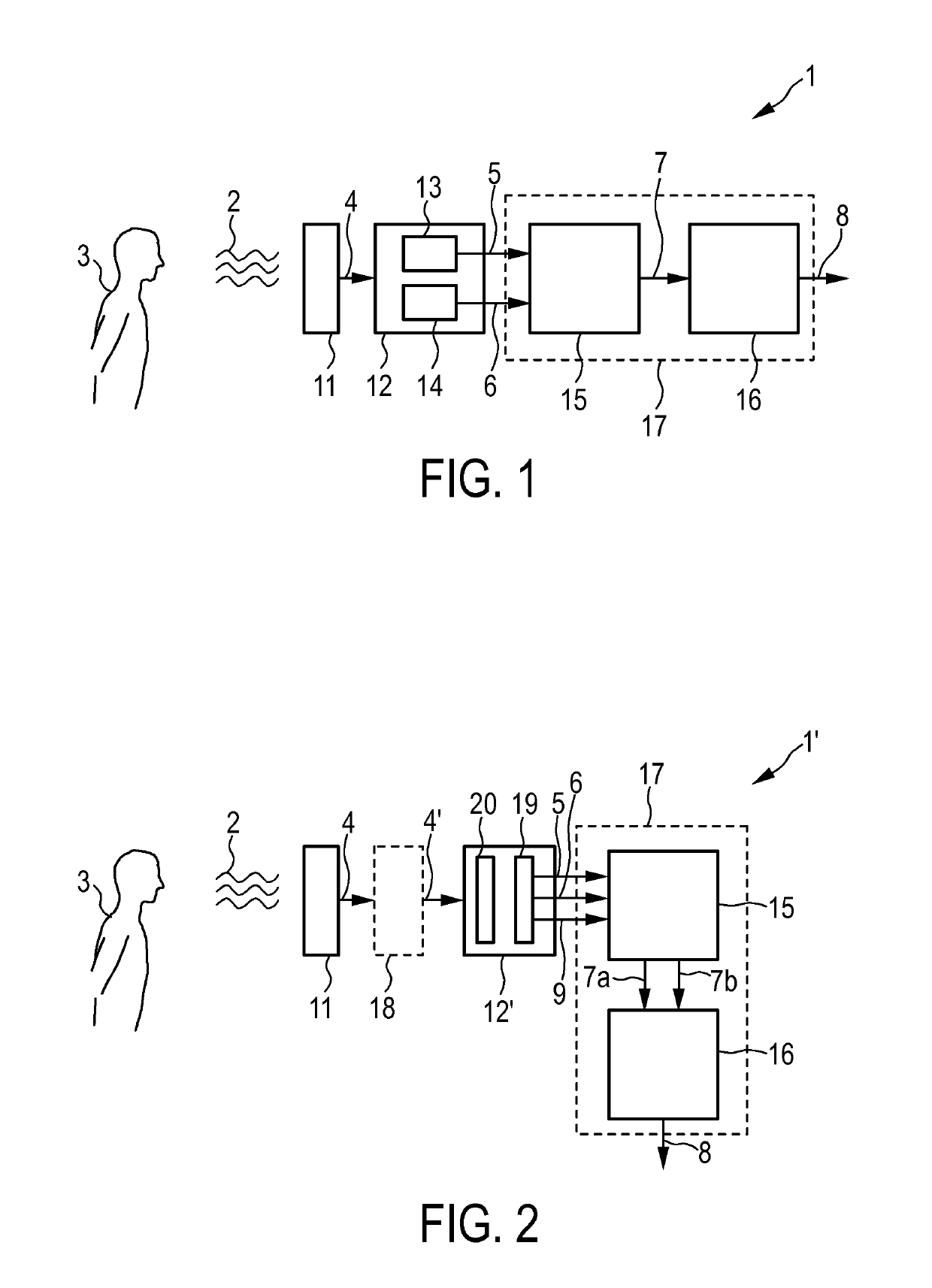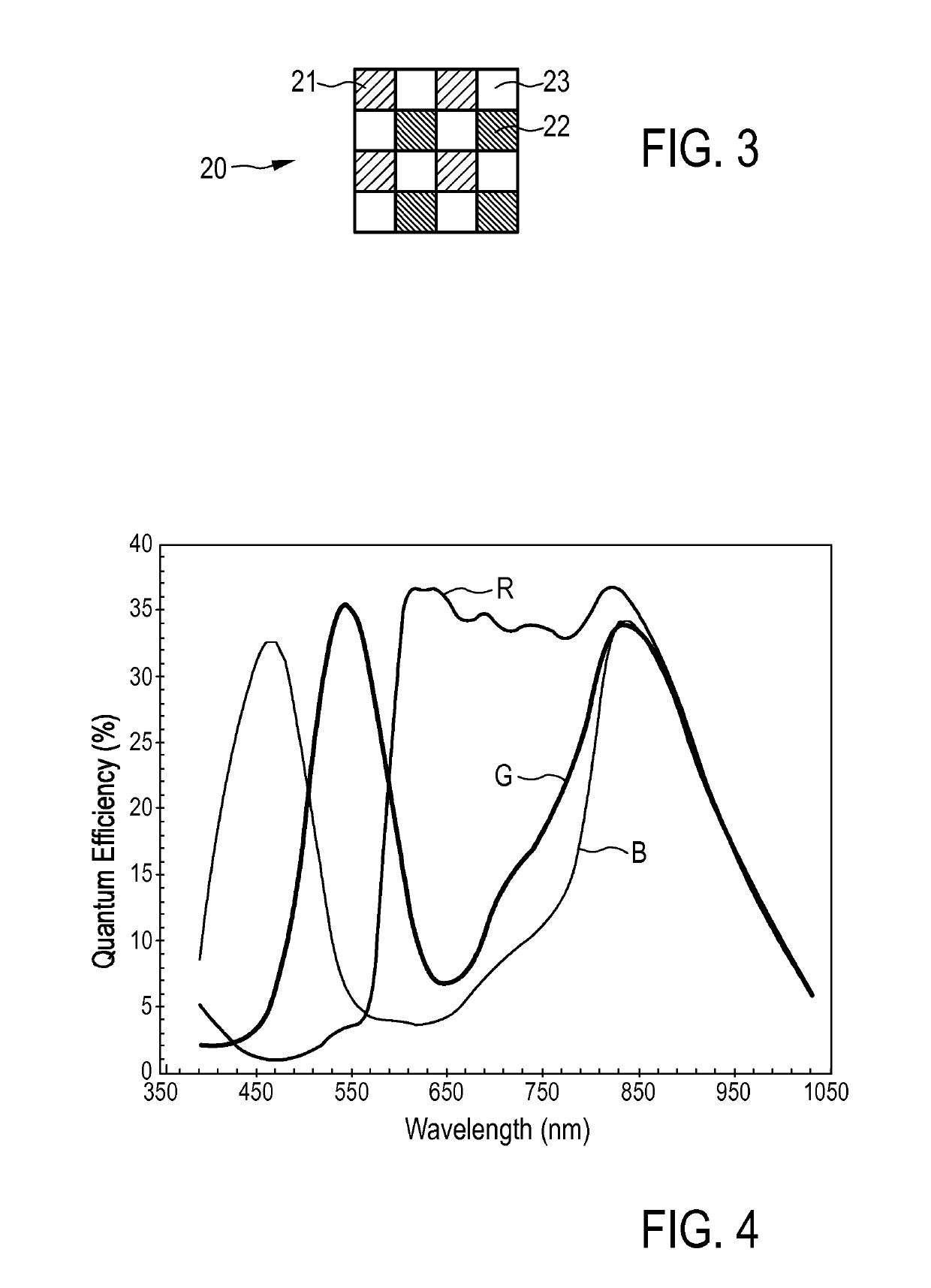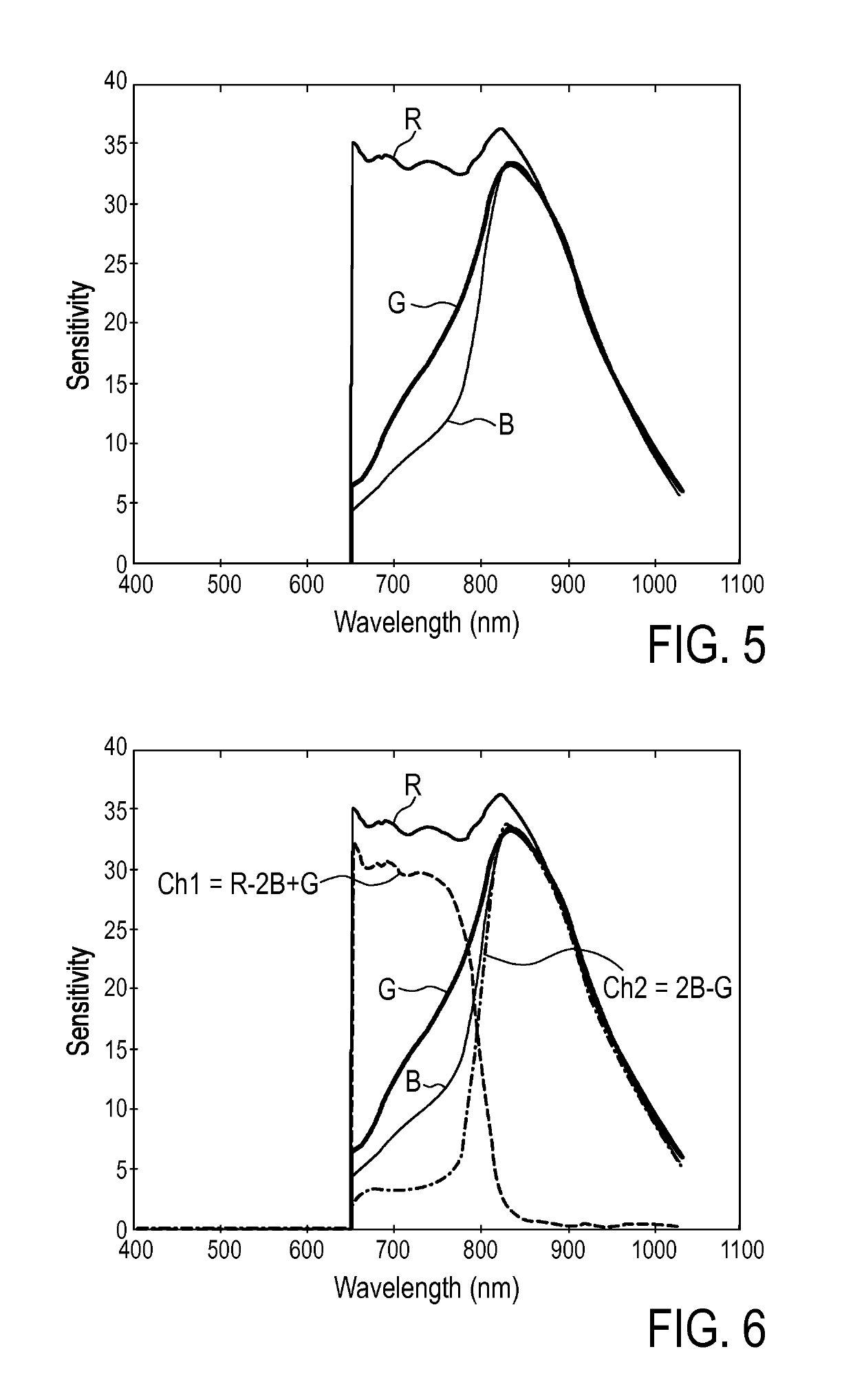Camera for generating a biometrical signal of a living being
a technology of living beings and cameras, applied in image analysis, medical science, image enhancement, etc., to achieve the effect of less complex and expensiv
- Summary
- Abstract
- Description
- Claims
- Application Information
AI Technical Summary
Benefits of technology
Problems solved by technology
Method used
Image
Examples
first embodiment
[0049]FIG. 1 shows a schematic diagram of a camera 1 according to the present invention. Electromagnetic radiation 2, in particular light in the visible and infrared wavelength range, reflected from a living being 3, such as a patient, is received and evaluated by said camera 1 for finally generating the biometrical signal of the living being 3. The camera comprises a filter 11 for blocking incident visible light within the incident electromagnetic radiation 2 in a wavelength range up to at least substantially 550 nm, preferably up to approximately 600 nm, even more preferably up to 650 nm. The filtered incident light 4 is then sensed by a color sensor 12 that generates at least two different color signals 5, 6, e.g. by use of two separate color detectors 13, 14 (or an array of such color detectors). A combination unit 15 generates at least one combined color signal 7 by combining said color signals 5, 6, e.g. by a linear combination. Finally, a processing unit 16 is provided for pr...
second embodiment
[0051]FIG. 2 schematically shows a camera 1′ according to the present invention. FIG. 2 shows that optionally an additional filter 18 may be provided (in this and / or other embodiments), which filter 18 is configured to block incident light in a wavelength range above at least 1100 nm, in particular above at least 1000 nm, before reaching the color sensor 12′. While generally those color sensors, e.g. imaging silicon sensors, show a sensitivity that naturally decreases towards longer wavelengths, such an additional filter 18 ensures that signal contributions within the filtered incident light 4 above said upper threshold wavelength are blocked, i.e. signal contributions in which water absorption becomes dominant are blocked in the twice filtered incident light 4′.
[0052]Further, in this embodiment the color sensor 12′ generates three different color signals 5, 6, 9, e.g. by use of a color filter array 20 having three different color filter areas provided in front of a photo detector 1...
PUM
 Login to View More
Login to View More Abstract
Description
Claims
Application Information
 Login to View More
Login to View More - R&D
- Intellectual Property
- Life Sciences
- Materials
- Tech Scout
- Unparalleled Data Quality
- Higher Quality Content
- 60% Fewer Hallucinations
Browse by: Latest US Patents, China's latest patents, Technical Efficacy Thesaurus, Application Domain, Technology Topic, Popular Technical Reports.
© 2025 PatSnap. All rights reserved.Legal|Privacy policy|Modern Slavery Act Transparency Statement|Sitemap|About US| Contact US: help@patsnap.com



